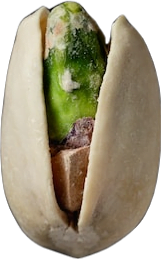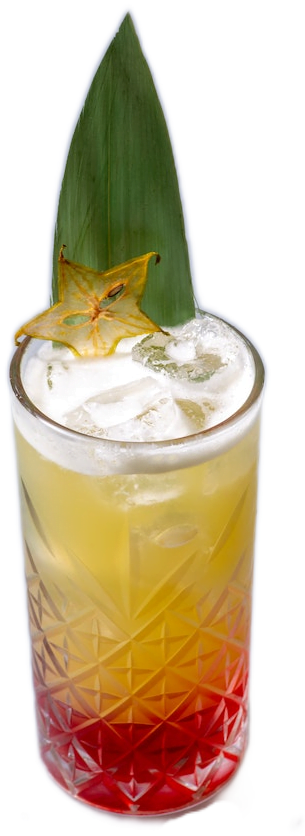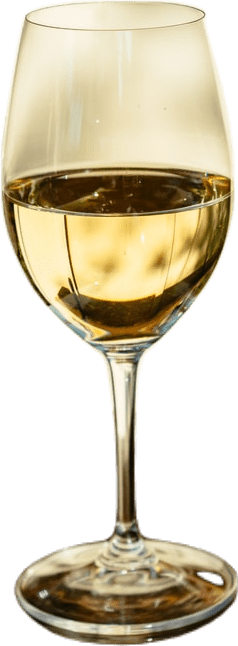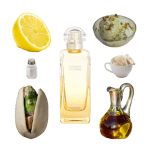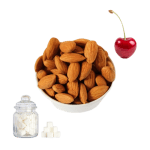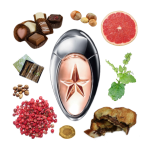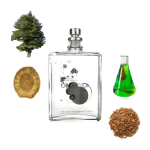What Does Acetyl Pyrazine Smell Like?

Finally, I’m writing one of these about an aromachemical rather than a natural material!
Acetyl pyrazine (or acetylpyrazine, or 2-acetylpyrazine if you want to get technical) is an aromachemical that is often used in fragrances and perfume. It is also used as a flavorant in production of many processed foods, especially baked goods. Both in food and perfume, Acetyl Pyrazine imparts a warm, nutty, slightly dry and dusty effect. It’s comforting and warm and slightly sweet, making it a popular component in both fragrance and processed foods.
Okay, but What Does it Smell Like?
The scent of acetyl pyrazine reminds me most of all of warm, toasty nutty notes. It smells to me like pistachio flavored and scented things do, roasted and nutty. It’s a comforting, warm scent that reminds me of bakeries, freshly-baked bread and baked treats, and, to a lesser extent, foods like popcorn, crackers, and chips. It’s sweet in a soft, rounded, warm sort of way, like the comforting crackling of a fireplace.
At higher concentrations acetyl pyrazine smells increasingly dusty and dry. It’s still sweet and nutty and warm, but that begins to be choked out by the dryness of it. It’s a little like the smell of a dusty old closet, a little bit papery and stale. For this reason, acetyl pyrazine is best used in dilutions of 1% or less in perfumery.
Personally, I love the smell of acetyl pyrazine, even at higher, dustier concentrations. It’s so comforting in a warm dusty nutty way. It makes me think most of all of pistachio scents and flavors, like Hermès darling soft gourmand Un Jardin à Cythère and the smell of a salted-caramel-and-pistachio-scented candle I smelled the other day at Trader Joe’s.
And then it’s a little like a stale but well-loved linen closet, and old and beaten-up cardboard box, reams of old paper and glorious nutty fall desserts. It might even remind one of old dusty books.
But, as always in fragrance, that impression is far from universal.
I was so excited to share the smell of acetyl pyrazine with my boyfriend. Because I adore it, and I adore him, and I know he loves the sweet, warm cozy comfort of scents like vanilla.
And he absolutely hated it. Found it positively vile. He recoiled like a cat in one of those videos of cats reacting to smells they don’t like, reeling back in complete shock and disgust.
“It’s like cardboard. Wallpaper. Old, stale, nutty, bitter, earthy in a bad way,” is the review he choked out. “I really, really don’t like it.”
What About Taste?
Acetyl pyrazine imparts a roasted, nutty, yeasty flavor to food. It’s naturally found in many foods, like seeds, nuts, meats, popcorn, and bread. It is also added to a number of processed foods, such as ice cream, graham crackers, potato and corn chips and similar snacks, and baked goods, to enhance their flavor. It is also often used as a flavorant for tobacco products. Some people find its sweetness to be a little like that of corn, either popped or fresh on the cob.
Because so much of our experience of flavor is really just scent, the flavor experience imparted by acetyl pyrazine is similar to the fragrance experience. It imparts a nutty, roasted sort of flavor that’s reminiscent of freshly-baked bread and toasted nuts and seeds. It’s a comforting and warm sort of flavor that lends itself well to desserts, processed snack foods, and other treats.
If you’re familiar with pandan, a tropical pine often used as a flavoring throughout East and Southeast Asia, you may find the smell of acetyl pyrazine quite similar. It may remind you of rice dishes and desserts, like sticky rice with coconut and pandan and many traditional Thai desserts.
Is Acetyl Pyrazine Safe?
As a flavorant, acetyl pyrazine is generally recognized as safe by the FDA.
In fragrance, its use should be regulated by IFRA, which regulates all fragrance materials. However, I haven’t been able to find a published IFRA limit for acetyl pyrazine, though there are some for many other pyrazines. I’m guessing many perfumers reach for another similar pyrazines, like methyl pyrazine, before acetyl pyrazine, which is used more in the world of flavoring.
In perfumery, pyrazines are generally best used in traces, from 0.1% up to 1% of a formula depending on the specific material.
What About Other Pyrazines?
Acetyl pyrazine is also often called nutty pyrazine or popcorn pyrazine because it is an aromachemical in the pyrazine family that closely resembles the smell of roasted nuts and popped corn.
There is also another pyrazine that others call nutty pyrazine. It’s a mouthful: 5H-5-methyl-6,7-dihydrocyclopenta[b]pyrazine. You can see why they just call it nutty pyrazine for short. You can see why these short nicknames are used, and also why they may not be entirely precise.
There are also other aromachemicals in the pyrazine family that impart similar warm, sweet, baked-good sorts of smells. Some are darker and smokier, while some lean towards specific notes, such as chocolate. For instance, cocoa pyrazine smells more like cocoa and chocolate, while 2-methyl pyrazine is another musty, nutty, brown note, often used to flavor coffee, meats, bread, and peanut butter. There is even a potato pyrazine.
But all of these are variations on the same profile: warm, musty, nutty, earthy, coffee, popcorn, potato, corn, and bread.
For this reason, perfumers often refer to pyrazines as a group when describing these sorts of materials and notes. Indeed, most pyrazines smell warm, nutty, musty, and slightly sweet. But it’s worth noting that not all pyrazine materials will smell this way. And, even if some of them do, they may not smell that way at all concentrations.
When wine connoiseurs, sommeliers, and vintners talk about pyrazines, for instance, they’re usually using the word as a shorthand for a very different smell and taste. In wine, the particular types and concentrations of pyrazines present tend to impart a variety of fresh green notes reminiscent of bell peppers and fresh salad.
That’s very different from the warm, nutty association with pyrazines in food, which goes to show two things: that closely related molecules can smell very different, and that the smell of a material can vary drastically with concentration and context.
Toasty, Nutty, Musty
Acetyl pyrazine is an incredibly popular aromachemical and flavorant for a reason. It has a comforting, warm and nutty profile with a wide appeal across food and fragrance. It’s not for everyone, though, and can present as dusty, musty, and stale at certain concentrations.
In perfumery, acetyl pyrazine is a gourmand note (one that makes you think of food, especially baked goods) that is likely to last for a long while. It most often is part of the heart of a perfume, lasting for around six hours on the skin in a melt of comforting warm and sweet notes. It’s often combined with other long-lasting gourmand notes like vanilla, coumarin, and tonka bean, along with other aromachemicals to achieve a particular desired effect.
Pyrazine Perfumes and Colognes
This is speculation on my part, since I don’t have access to the secret formulas behind these fragrances, but based on their scent profile, I strongly suspect the following perfumes and colognes have a prominent component of acetyl pyrazine, methyl pyrazine, or another similar pyrazine:
- Un Jardin à Cythère Eau de Toilette by Hermès
- Ambre Narguile Eau de Toilette by Hermès
- Angel Muse Eau de Parfum by Mugler
- A*Men Pure Havane Eau de Toilette by Mugler
- Santal Majuscule Eau de Parfum by Serge Lutens
- En Passant Eau de Parfum by Frédéric Malle
- Memoirs of a Trespasser Eau de Parfum by Imaginary Authors
- By the Fireplace Eau de Toilette by Maison Martin Margiela
- Mémoire d’une Odeur Eau de Parfum by Gucci
